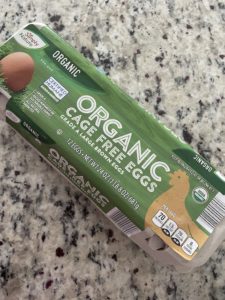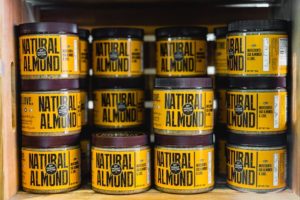All these buzz words on packaging at grocery stores or on menus at your local restaurant can be confusing.![]()
Grass-fed, free-range, organic, natural…It’s everywhere. From eggs to cereal to meat.
It can be pretty confusing and with new terminology springing up in a pretty much unregulated world you may need a bit of guidance.
Knowing what a food label truly means can help you understand where your food came from and how it’s been produced. It’s also critical to know what you’re eating is eating.
Here are some common phrases and what they mean.
 Antibiotic-Free – means an animal was not given antibiotics during its lifetime.
Antibiotic-Free – means an animal was not given antibiotics during its lifetime.
Cage-Free – birds were raised without cages. But this leaves out is whether the birds were raised outdoors or pasture or indoors in crowded conditions.
PRO TIP: If you shop for eggs, poultry, or meat look for pastured or pasture-raised.
Free-range – Along with free-roaming only defined by the USDA. This means the producers just need to allow the birds some access to the outdoors. It doesn’t necessarily mean the products are cruelty-free or antibiotic-free, or that the animals spent the majority of their time outdoors. Not verified by third-party inspectors.
GMO-free, Non-GMO, OR No GMOS – Genetically modified organisms, are plants or animals that have been genetically engineered with DNA from bacteria, viruses, or other plants and animals. Products can be labeled any of these if they’re produced without GMOs.
Grass-fed – The animals ate grass as their natural diet, rather than grains. More humane and this meat is leaner and lower in fat and calories than grain-fed. The diet has no grains, animal by-products, synthetic hormones, or antibiotics unless given to treat disease. A “grass-fed” label doesn’t mean the animal necessarily ate grass its entire life. Some grass-fed cattle are grain-finished, which means they ate grain from a feedlot prior to slaughter. Look for “grass-fed and grass-finished.”
Healthy – Foods labeled “healthy” must be low in saturated fat and contain limited amounts of cholesterol and sodium. Certain foods must also contain at least 10% of the following nutrients: Vitamin A or C, iron, calcium, protein, or fiber.

Natural – Currently, no standards exist for this label except when used on meat and poultry products. USDA guidelines state that “natural” meat and poultry products can only undergo minimal processing and can’t contain artificial colors or flavors, preservatives, or other artificial ingredients. However, “natural” foods aren’t necessarily sustainable, organic, humanely raised, or free of hormones and antibiotics.
Organic – Tough to get this certification. All organic agricultural farms and products must meet strict guidelines and are verified. From the prohibited materials of synthetic fertilizers, pesticides, the use be clear 3 years prior to certification and also through their organic license. There are no GMO’s. Must employ positive soil and crop rotation practices. Outdoor access and pasture for livestock must be provided. No antibiotic or hormone use in animals. Animals must eat 100% organic feed. If you see “USDA Organic” seal 95-100% of ingredients are organic so look for that. Products can still make organic claims based on ingredients.
These are just some common phrases to understand to help you make informed decisions the next time you go to the grocery store or your local farmer’s market. If you see a new phrase research it to be sure you know the origin.

